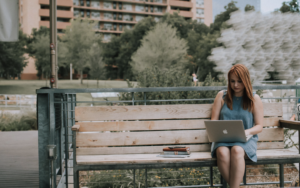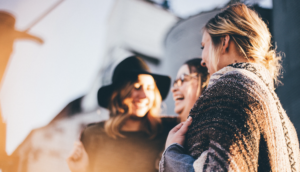It was during a Monday night watch party for “The Bachelor” amongst a small group of 20-something women when I was able to witness it happening first hand. Wine glass in one hand and iPhone in the other, we all suddenly found ourselves searching for flights – just “to see” what costs look like – if we too could explore Portugal and experience the food, culture and thrills we just saw on screen.
There’s no denying big broadcast opportunities require a big paycheck to facilitate them (note: in many cases large productions are not being paid, but tourism boards and hotels are working to cover the expenses for airfare, hotel nights, meals/transportation for cast and crew, etc.) but in a world where people are constantly scrolling, swiping and flipping the page – uninterrupted TV programming may just be your best bet.
There’s no denying traveling can be complicated and involve a number of moving parts. According to Expedia, consumers, on average, visit 38 websites before booking a trip. And while seeing a destination play out as a backdrop for a romantic date, cooking segment or as the temporary set of your favorite talk show may not eliminate any of those steps for a consumer, it can certainly paint a stronger picture of how to truly “experience” a destination.
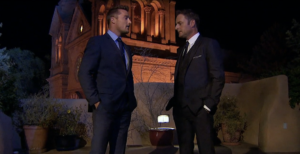
“The Bachelor Effect”
With an average of 7 million viewers per week, The Bachelor delivers a one-of-a-kind romantic journey set amongst the world’s most beautiful destinations. From Thailand and the Maldives to Bermuda and the Bahamas, The Bachelor and Bachelorette franchises travel to some of the most exotic locales and take viewers along for the ride. The captive audience sees a destination in a way that anyone would want to enjoy it: great food, amazing romance, local culture and a sense of wonder and excitement that inspires the viewer to want to be there. The stakes are even higher for destinations that showcase the finale, which typically ends in a proposal. In a recent article on Skift, Peter Scalettar, the show’s co-executive producer estimated the media value of a finale appearance between $20 million and $100 million.
No longer is the coverage limited to just an episode of the program. Outlets like People.com, Time, Betches and many others have dedicated staffers for The Bachelor beat and provide secondary coverage to the show’s travel locations. Host destinations/hotels are also able to leverage their experience on the show in creative markets, from the development of hotel packages that recreate dates seen on the show, to consumer-centric watch parties hosted by former show contestants.
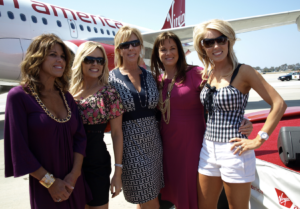
Keeping Reality TV “real”
Beyond the over-the-top antics of “The Bachelor/The Bachelorette,” reality TV continues to be a dominant force of programming that incorporates travel. From the number of “Real Housewives” series on Bravo to cooking shows like “Top Chef,” the amount of broadcast exposure can come in a number of ways. Many “bravolebrities” – a term for the cast of characters that have their lives filmed and aired on the cable channel Bravo – have also established large social media followings and partner with brands on sponsored posts. Taking it one step further, these social media posts are also turning in to content on major news sites. Take this photo for example:https://people.com/home/rhobh-cast-bikini-bodies-bahamas/
Scripted Programming Integrations
Away from reality TV, there are still opportunities for travel brands to reach consumers through broadcast programming. Savvy brands are working with productions to incorporate vacations into the scripts of popular shows. Rather than fast forwarding through a commercial and completely missing an ad, when the family of your favorite sitcom suddenly arrives at one of the world’s best vacation spots, the seed is planted that maybe you should take your family there as well. While this approach has been previously more popular with consumer products (ever notice how conveniently the Coca-Cola label was showing when your favorite characters took a swig?), its an area for growth for travel brands.
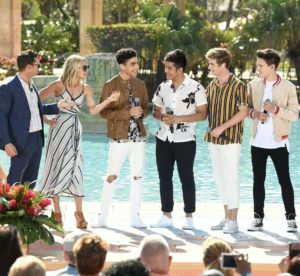
Taking the Morning Show on the Road
Shows like The Today Show, Good Morning America and Live with Kelly and Ryan can also provide a big impact when filming in a destination. In this scenario, the show also brings many celebrities to the destination for interviews. In 2018 Atlantis, Paradise Island welcomed Live with Kelly and Ryan to broadcast from their resort in the Bahamas. In addition to the celebrity power of Kelly Ripa and Ryan Seacrest (which generated incredible reach on social media and amongst celebrity outlets), guests of the show also included Heather Graham, Whitney Cummings, Taylor Kitsch and more .
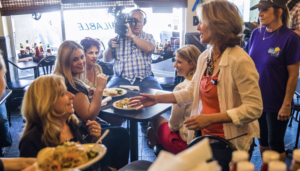
Mid-Sized Programming
While large-scale productions like “The Bachelor” can often include a large crew, there are several travel-centric shows on channels like PBS that can be more manageable for destinations unable to offer 100+ room nights for a production. Known from her time on the Travel Channel, Samantha Brown’s “Places to Love” on PBS travels to a new destination each episode. Over the course of half-an-hour, Samantha meets passionate locals who help showcase the special destination through their eyes. Along the way viewers are introduced to chefs, artists, and a range of local artisans. By comparison, Samantha and her crew are less than 10 people and as a result the costs are significantly less to feed, house and transport 10 instead of 100.
In a time when consumers can’t get enough content, broadcast continues to be one of the leading ways to reach consumers. Despite all the ways that consumers can interact with something online or take a virtual tour of a hotel room, there’s nothing that is quite the same as seeing it play out in real-life. And it certainly doesn’t hurt if your favorite celebrity…or “bravolebrity”…was recently there.
from Lou Hammond Group https://louhammond.com/2019/03/29/why-investing-in-big-opportunities-has-big-results/
via https://louhammond.com

